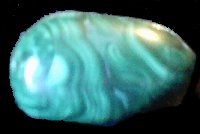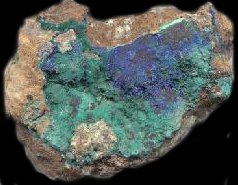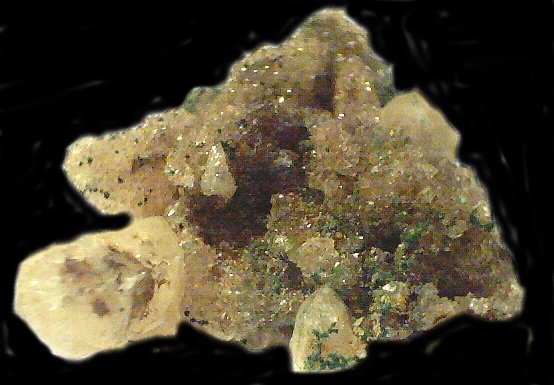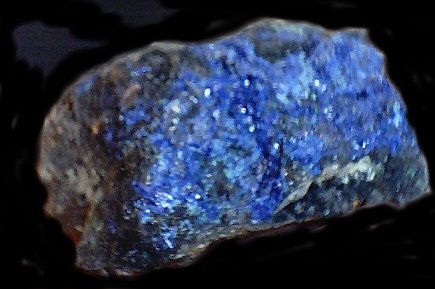MALACHITE and AZURITE

tumbled

malachite with azurite from the Inca do Oro mine in Chile


wonderful naturally polished botryoidal malachite specimen from Zaire, Africa
Because of its beauty and relative softness, polished, banded Malachite has been carved into ornaments and worn as jewelry for thousands of years. In some cultures it was thought to be a protection from evil if worn as jewellery. Malachite has also been widely used as an ornamental stone. In Czarist Russia it was used to make the columns of St. Isaac's Cathedral in Leningrad. The original material, from which ornaments and jewelry were made since the earliest times came from an enormous deposit in the Ural Mountains of Russia, where massive globular specimens were found. Malachite is still very popular among mineral collectors, especially interestingly shaped and banded specimens. It is also used as an ore of copper and crushed to make a green pigment. Malachite is usually found with azurite, a blue secondary mineral of copper, but its more widespread and abundant. Some mineral samples have alternating bands of green malachite and blue azurite, forming what is commonly known in the gem and mineral trade as Azure-malachite.
Hardness: 3 1/2 - 4 other characteristics

Malachite on druzy quartz, Chihuahua, Mexico

A beautiful piece of Azurite from the Morenci Pit Mine, Morenci, Arizona
Azurite (Cu3(CO3)2(OH)2, Copper Carbonate Hydroxide )
Azurite is a very popular mineral because of its unparalleled color, a deep blue called "azure", hence its name. The color is due to the presence of copper (a strong coloring agent), and the way the copper chemically combines with the carbonate groups (CO3) and hydroxyls (OH). Azurite has been used as a dye for paints and fabrics for eons. Unfortunately, at times its color is too deep and larger crystals can appear black. Small crystals and crusts show the lighter azure color well.
Hardness: 3 1/2 - 4 Other characteristics
| PSEUDOMORPHS (often occurs with malechite and azurite, for example - although not in the above sample). (Thank you to John Betts for this)
|
| Malachite: A stone of transformation. Transfers sacred information leading to spiritual evolution. Helps one look deep within oneself. Clarifies, equalizes, and balances the emotions. Pulls out any kind of blockages. Used to promote sleep, strengthen the eyes, head, kidneys, pancreas, spleen, and stomach. Treats mental illness and right/left brain imbalances.
Stone of balance and transformation. Brings to understanding processes in one's life and body, assisting in one's spiritual evolution. Stimulates intuitive power, making one more open to change and advancement. Malachite also represents fidelity, loyalty, practicality, and responsibility. Allows for insight into emotional factors that may be manifesting as physical illness. It is known for protection against radiation and for strengthening immune system. Eases delivery in birthing, and also facilitates the re-birthing process, as it helps one to recognize and clear past negative experiences. Azurite's Metaphysical Properties are: It is known as a "stone of heaven." It stimulates the pursuit of the heavenly self, providing for guidance via the third-eye and allowing for precise verbalization of psychic experiences. It awakens the development of the psychic self and provides for insight into all areas of one's life. It enhances creativity, mellows the intellect with love, helps one to maintain communication from the "heart space," and stimulates one's compassionate and empathetic nature. It also enhances self-confidence, allowing for invincibility when required. Azurite with Malachite....Blue, blue-green with deep green...Energy of the two minerals combined helps meditation by going deep within for rebirth "into the light". Helps reach inner depths without fear. Freshens one's outlook. Energy of the combination helps to meditate by going deep within, allows one to reach into inner depths without fear; produces a flow to actions and willingness toward flexibility; assists in dissolving egocentric characteristics - conceit, arrogance and vanity; gives comfort by calming anxiety; enhance flexibility in motion and treat disorders associated with skin, bones, teeth, circulatory system and secretory organs. |